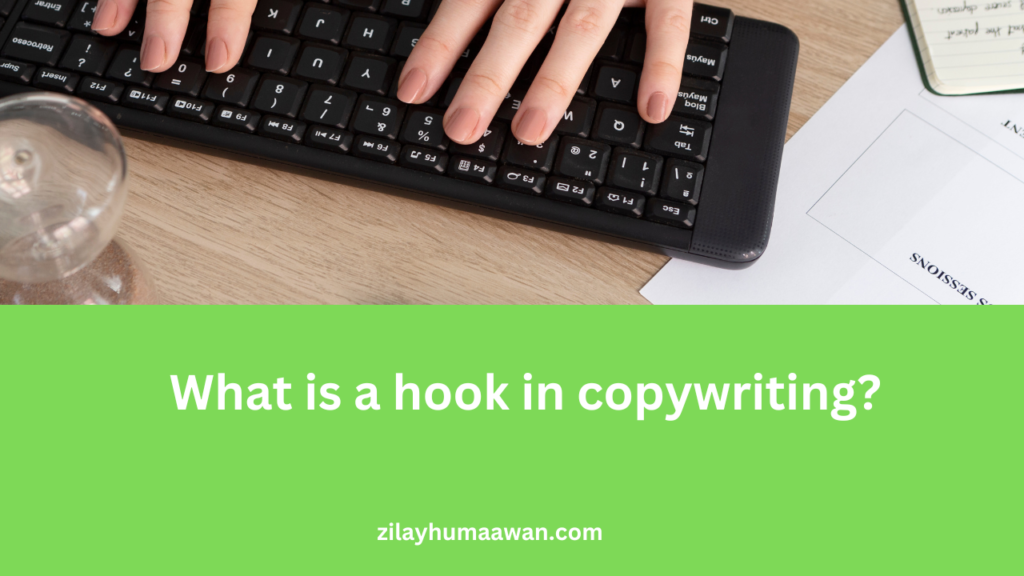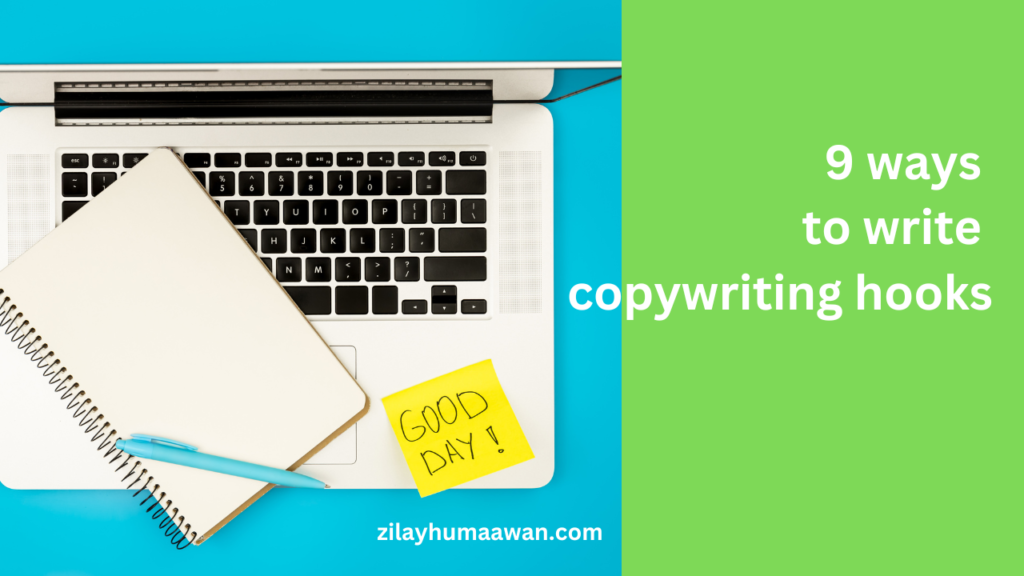What is a hook in copywriting?- Curious!
Ever wondered how some advertisements or blog posts grab your attention immediately, making it nearly impossible to scroll past without taking a closer look?
Well, that’s the magic of a hook in copywriting.
What exactly is a hook, and how does it work its spell on readers?
Let’s delve into the captivating world of copywriting hooks in this brief introduction.
Here, what is sales funnel copywriting?
What is a hook in copywriting?
In copywriting, a hook is a compelling and attention-grabbing element placed at the beginning of a piece of content, designed to captivate the audience and entice them to continue reading or engage further.

The hook should be concise, impactful, and relevant to the audience’s interests, sparking curiosity and creating a connection.
Whether through a clever headline, a provocative question, or a powerful statement, a well-crafted hook serves as the doorway to the rest of the message, drawing the reader in and setting the tone for the entire piece of copy.
Its primary goal is to pique interest and encourage continued engagement.
Here, is freelance copywriting a good career?
Why Hooks Can Make or Break Your Copy
Hooks can make or break your copy because they determine the initial impression and engagement level of your audience.
A compelling hook grabs attention, encouraging readers to delve into the content. It sets the tone and builds anticipation, making the difference between capturing interest and losing the audience.
A weak or generic hook may result in disinterest and a lost opportunity to convey your message.
Effective hooks resonate with the target audience, addressing their needs or sparking curiosity, ensuring that your copy stands out in a crowded space.
Ultimately, the success of your copy often hinges on the strength of its hook.
Here, will copywriting be automated?
9 ways to write copywriting hooks
1. Start with a Provocative Question:
Pose a thought-provoking question that triggers curiosity. For instance, “Ever wondered how a simple change in mindset can transform your success?”
2. Use a Powerful Statistic or Fact:
Incorporate a surprising statistic or compelling fact to capture attention. Example: “Discover the shocking truth: 80% of people underestimate the impact of daily habits on their productivity.”
3. Create a Sense of Urgency:
Employ time-sensitive language to prompt immediate action. “Limited-time offer: Unlock exclusive benefits when you subscribe within the next 24 hours!”
4. Tell a Story:
Narrate a compelling story that connects emotionally with the audience. “Meet Sarah, who went from struggling freelancer to six-figure success. Learn her secrets to financial freedom.”
Here, what is the purpose of copywriting?
5. Invoke Emotion:
Appeal to emotions by using powerful and relatable language. “Feel the joy of a clutter-free home with our revolutionary organizing solutions.”

6. Highlight a Benefit or Solution:
Clearly articulate the benefits or solutions your product/service offers. “Experience radiant skin in just 7 days – our breakthrough skincare formula revealed!”
7. Use Intriguing Analogies or Metaphors:
Draw comparisons to stimulate imagination. “Unleash your creativity with our new software – it’s the rocket fuel for your artistic journey.”
Here, what is content copywriting?
8. Employ Playful or Witty Language:
Inject humor or playfulness to make your copy memorable. “Don’t let your inbox turn into a jungle! Tame the email chaos with our inbox organization tool.”
9. Appeal to Identity or Aspiration:
Connect with the reader’s identity or aspirations. “Join the community of fearless leaders – elevate your career and make an impact that lasts a lifetime.”
Remember, a successful hook combines relevance with the psychology of your target audience, enticing them to explore further and engage with your message.
What is an example of a hook in copywriting?
“Unlock Your Potential: Transform Your Mornings, Transform Your Life! Ever wished for a magic formula to kickstart your day with energy and purpose? Introducing ‘Sunrise Mastery,’ the revolutionary guide to supercharge your mornings and conquer your goals.
Join thousands who have already embraced the power of a purposeful morning routine. Say goodbye to sluggish starts – it’s time to rise and thrive! Start your journey to a more productive and fulfilling life today.”
Here, what is brand copywriting?
How do you write a good hook?
To write a good hook, captivate your audience with a compelling statement, question, or intriguing fact.
Understand your audience’s interests and pain points, tailoring the hook to resonate with them.
Create curiosity, promise value, or evoke emotion to entice further reading. Keep it concise, impactful, and relevant to your message.
Experiment with various techniques like storytelling, humor, or urgency.
A successful hook sets the tone, sparks interest, and convinces readers that your content is worth their time, encouraging them to delve deeper into your message.
What is hook in content writing?
In content writing, a hook is an attention-grabbing element placed at the beginning of a piece to engage and entice readers.
It serves as a captivating introduction, designed to pique curiosity and encourage further exploration of the content.
A well-crafted hook can take various forms, such as a compelling question, a surprising fact, a relatable anecdote, or a powerful statement.
Its purpose is to establish a connection with the audience from the outset, compelling them to continue reading and ensuring that the content leaves a lasting impression.
The effectiveness of a hook often determines the success of the entire piece.
How do you make a good hook for an ad?
Crafting a compelling ad hook involves understanding your target audience and addressing their needs or desires.
Start with a bold statement, provocative question, or intriguing fact that instantly grabs attention. Highlight a unique selling proposition or a key benefit to create interest.
Inject emotion, urgency, or humor to make the ad memorable. Keep it concise, relevant, and aligned with your brand’s tone.
Test different hooks to find the one resonating most with your audience.
A successful ad hook entices the audience to delve deeper into your message, increasing the likelihood of conversion and leaving a lasting impression.
Leave a Reply